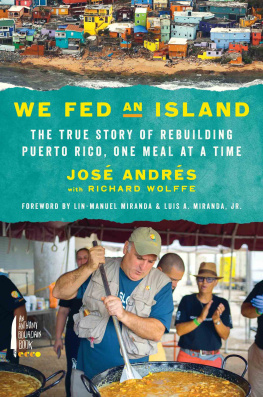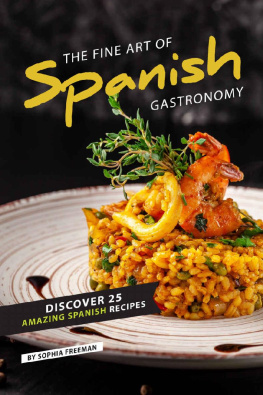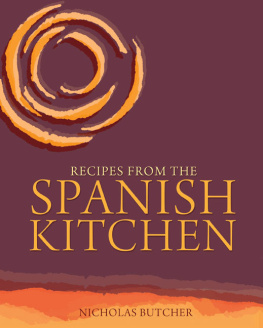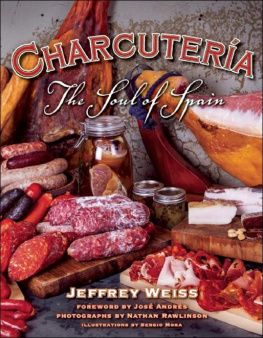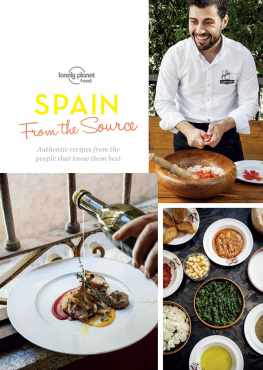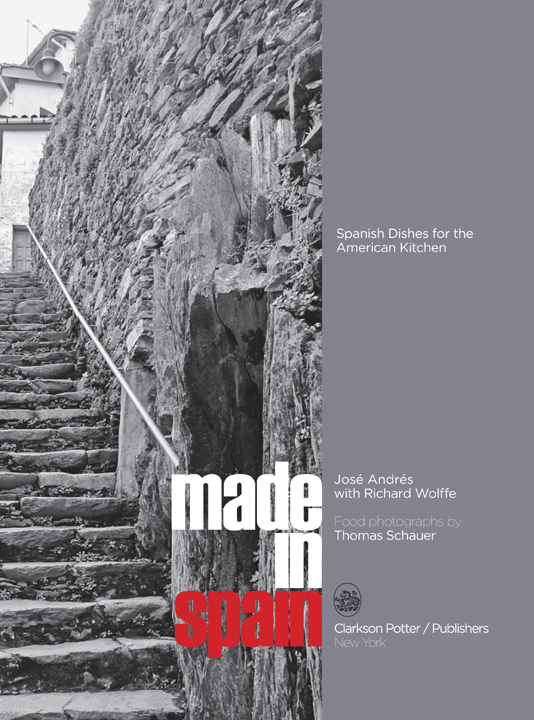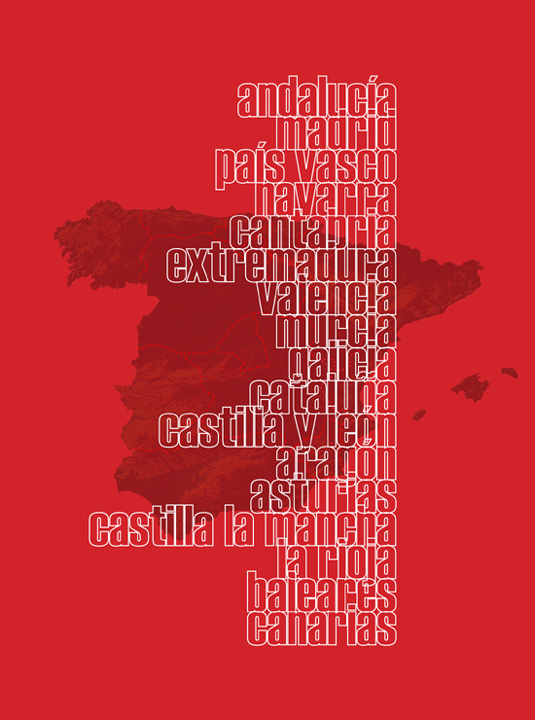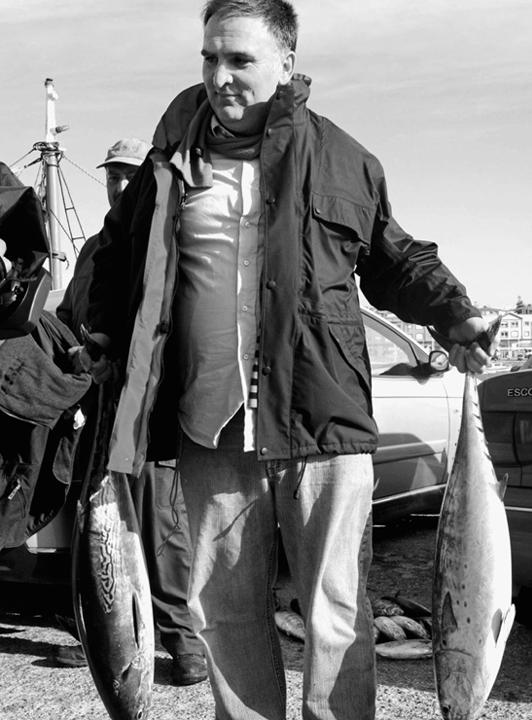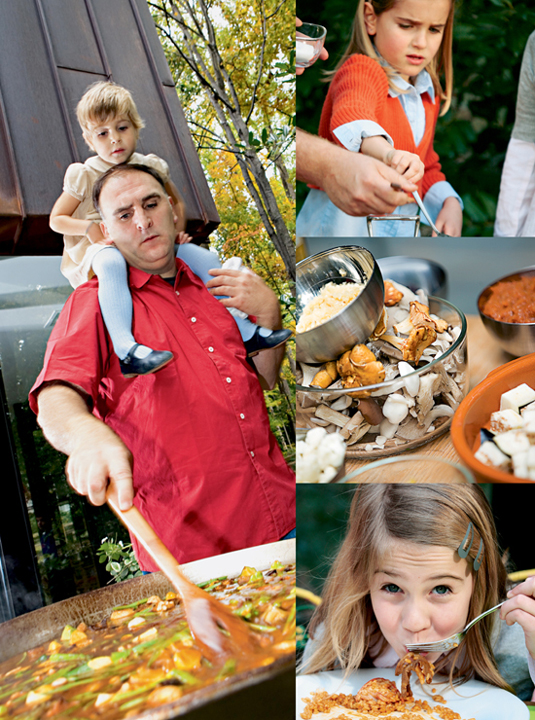Copyright 2008 by Jos Andrs
Food photography 2008 by Thomas Schauer
All rights reserved.
Published in the United States by Clarkson Potter/Publishers, an imprint of the Crown Publishing Group, a division of Random House, Inc., New York.
www.crownpublishing.com
www.clarksonpotter.com
Clarkson Potter is a trademark and Potter with colophon is a registered trademark of Random House, Inc.
Library of Congress Cataloging-in-Publication Data
Andrs, Jos.
Made in Spain : Spanish dishes for the American kitchen / Jos Andrs.1st ed.
p. cm.
1. Cookery, Spanish. I. Title.
TX723.5.S7A6175 2008
641.5946dc22 2008027709
eISBN: 978-0-7704-3422-9
Art Direction / Design by Tasty Concepts / Roberto Sablayrolles
Spain photography by Pablo de Loy.
Additional Spain photography courtesy of
Tourist Office of Spain and Javier Canovas.
v3.1
To Tichi, Carlota, Ins, and Luca
Thank you for helping me achieve everything I dream.
and to the people of Spain, especially those who help tell the story of Spain to the world.
introduction
[Introductin]
I have always dreamed of the United States. As a child, I was fascinated by Disney, and by the time I was a teenager, I devoured all things American. I loved movies like Indiana Jones and Star Wars and would stay up until 4:00 in the morning to watch Magic Johnson and Larry Bird play in the NBA finals. My first visit to the States came while serving as a crew member on a Spanish navy shipa 1920s tall ship called the Juan Sebastan Elcano after the great sixteenth-century explorer. We docked in Pensacola, Florida, which was like a dream to me because it was founded by a Spanish conquistador. Pensacola is known as the city of five flags for the five nations that ruled it in turn: Spain, France, Britain, the Confederacy, and the United States. There I befriended the owner of a local restaurant and wondered when I would return. By the time we reached our next port of call, New York, my mind was made up. At the time, I was the skinniest, fastest man on board, and I had the best postat the top of the tallest mast. Sailing into New York Harbor, I was overcome by the sight of the Statue of Liberty. I knew Id find my way back.
After leaving the navy, I started my career in Spain as a chef. I didnt think too much more about my dream of coming to the United States until I heard of a wonderful opportunity. It was 1991, just before the Barcelona Olympics, and there was a lot of American interest in Catalonian restaurants. A new one was opening in New York, and I jumped at the chance to work there. Sadly, the restaurant, Paradis Barcelona, didnt succeed. But I soon heard of another restaurant, El Dorado Petit, opening in a few monthsa spinoff of a Barcelona institution that was one of the top three restaurants in the world. El Dorado Petit was a great fit for me because I had just spent time working with Ferran Adri at El Bulli, widely recognized as the best, most creative restaurant in the world today.
Now I had a new dream: to bring Spanish food to the United States. Today, many people tell me Im a visionary for knowing that Spanish cooking was going to become as successful and popular as it has become. But I can only look back and smile. I didnt choose to focus on Spanish cooking; it was the only thing I knew.

But what exactly is Spanish cooking? When I first arrived in the States, my idea of Spanish gastronomy was different from the food I have come to cook at my tapas restaurants. As a young chef, I was even a little bit ashamed of traditional Spanish cooking. Although I knew a lot about traditional food, my background was in Michelin-starred restaurants like El Bulli, where the focus was on creative cooking. To us, tapas were something to eat when we didnt have much money. It took me four or five years in the United States to figure out it doesnt matter if Spanish cooking is modern or traditional; its all Spanish, and its all worth fighting for. I realized that tapasat the high or low endwere the single best way to bring Spanish food to the States.
The revelation started with some wise advice from one of my first mentors: Clemente Bocos, an important figure in Spanish cooking in America. Clemente owned a tiny tapas bar called El Cid in downtown Manhattan. He and his wife, Yolanda, were like family, and they took care of me. At the time, my restaurant, El Dorado Petit, didnt have any clarity of direction, and it kept changing recipes. In the end, they didnt resemble what they were back home in Barcelona. My friend Clemente said, Jos, you know very well how to cook. You need to follow your instincts. Dont Americanize anything. You need to cook for yourself and to please yourself. Its the only way youll be able to please others and make sure they enjoy your cooking and Spanish cooking.
It was that spirit that helped make my Jaleo restaurants so successful in the Washington, D.C., area: an authenticity based on real Spanish ingredients and uncomplicated Spanish cooking. That was also the inspiration for my public television show, Made in Spain. I wanted to show U.S. viewers that they too could easily cook Spanish dishes at home, using simple American ingredients and genuine Spanish products readily bought here. Moreover, I wanted to show where all that great Spanish food and drink came from: the spirit, the people, and the land that gave birth to my cooking.
To outsiders, Spain looks like a single country, but to Spaniards, their country is a fascinating mixture of people, language, culture, and food. The regional differences across Spain reflect their contrasting geographies, climates, and histories, and those differences make for an exceptionally varied approach to what I love best: cooking and eating. If theres one thing all Spaniards share, its a love of food and drink. From the residential markets of Madrid to the avant-garde restaurants of Catalonia, theres a deep appreciation of the highest-quality ingredients, great old traditions, and brand-new ideasnot to mention a great deal of national pride.

In this book you can find all the recipes I cook in Made in Spain, as well as many more dishes like those I eat on the street, at the beach, or in Spains great restaurants. Youll also find special pages on each of the regions I visit in the show. Yet the regions are less important than the food, which is why this book is organized by the kind of dishes I think youll want to cook.


